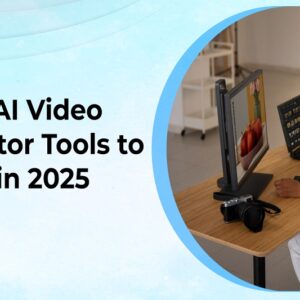
Transportation and logistics companies have a lot to manage, from coordinating shipments to managing a fleet of vehicles. With so much to keep track of, it’s no wonder that many companies are turning to mobile technology to help streamline their operations and improve customer service. A transportation and logistics mobile app can provide a number of benefits for your business, such as real-time tracking, automated dispatch, route optimization, improved customer service and increased revenue. In this article, we will explore the benefits of developing a transportation and logistics mobile app and provide a step-by-step guide for developing one.

Why Developing a Transportation and Logistics Mobile App is a Must for Your Business
Transportation and logistics companies have a lot on their plates. They have to manage a fleet of vehicles, keep track of multiple shipments, and coordinate with multiple parties to ensure that everything runs smoothly. With so much to keep track of, it’s no wonder that many companies are turning to mobile technology to help streamline their operations and improve customer service.
Developing a transportation and logistics mobile app can provide a number of benefits for your business. Here are just a few:
- Real-time tracking: With a transportation and logistics mobile app, customers can track their shipments in real-time. This provides them with peace of mind and allows them to plan accordingly.
- Automated dispatch: A transportation and logistics app can automate the dispatch process, making it easier to coordinate with drivers and ensuring that the right vehicle is sent to the right location at the right time.
- Route optimization: A transportation and logistics app can also optimize routes to ensure that vehicles are taking the most efficient routes possible. This can help to save on fuel costs and reduce the environmental impact of your business.
- Improved customer service: With a transportation and logistics mobile app, customers can access information about their shipments and make changes to their orders at any time. This can help to improve customer satisfaction and keep your business running smoothly.
- Increased revenue: With a transportation and logistics mobile app, you can offer new services to your customers and increase your revenue. For example, you can offer in-app booking and payments, or allow customers to track their shipments in real-time.
- Cost-effective: A transportation app can be cost-effective as it eliminates the need for manual tracking, dispatching and other processes, reducing labor costs and increasing efficiency.
- Better communication: With an app, you can enable real-time communication between the dispatch team, drivers, and customers, making it easier to coordinate and resolve issues quickly.
- Data analytics: With an app, you can track and analyze data such as delivery times, fuel consumption, and customer feedback, which can help you identify areas for improvement and make data-driven decisions.
Developing a transportation and logistics app development can be a complex process, but with the right approach, it can be a powerful tool for streamlining operations and improving customer service. By understanding your target market and the specific needs and pain points of your customers, you can develop an app that is tailored to their needs and will be more likely to be adopted and used by them.
Develop a transport and logistics app step-by-step
Developing a transportation and logistics mobile app can be a complex process, but by breaking it down into smaller steps, it can make the development process more manageable. Here is a step-by-step guide for developing a transportation and logistics app:
- Research and Planning: Before starting the development process, research your target market and the specific needs and pain points of your customers. Also, identify the key features of your app that will be most valuable to your target users.
- Design: Create a wireframe of your app, which will help you to visualize the layout and functionality of your app. This will give you a clear understanding of the user flow and navigation and ensure that everything is working as expected before you move on to the next step.
- Development: Choose the right platform, whether it’s iOS or Android, or both, and start the actual development process. Use a cross-platform development framework like Flutter, React Native, Xamarin etc. to make sure that your app runs seamlessly on both platforms.
- Integrations: Integrate third-party services such as Google Maps, GPS, and push notifications to ensure the smooth functioning of your app. Also, make sure to integrate a payment gateway for in-app purchases or bookings.
- Backend development: Develop the backend for your app that will handle the data and logic of the app. This will ensure that the app runs smoothly and efficiently.
- Testing: Once your app is developed, test it thoroughly and make any necessary adjustments. Iterating on your app in this way will help to ensure that it is as user-friendly and effective as possible.
- Deployment: Once your app is ready for launch, deploy it on the app stores and make sure that your customers know about it. This will help to ensure that it is adopted and used by as many people as possible.
- Maintenance and Monitoring: Continuously monitor the app’s performance, keep an eye on the analytics, and make improvements as needed. Also, make sure that your app is updated regularly to ensure that it runs smoothly and without errors.
Features to Include in Your Logistics & Transportation Mobile App
Features Of User App Panel
Here are some common features that a user panel for a transportation and logistics app may include:
- Real-time tracking: Users can track their shipments in real-time, providing them with peace of mind and allowing them to plan accordingly.
- Booking and Scheduling: Users can book and schedule shipments, including the pickup and delivery dates, and the type of vehicle required.
- Payment: Users can make in-app payments for the services they have booked.
- Push notifications: Users will receive push notifications to inform them of the status of their shipment, including when it has been picked up and when it will be delivered.
- Order history: Users can view their order history, including details of past shipments, and download invoices.
- Rating and reviews: Users can rate and review their experience with the service, providing valuable feedback to the company.
- Customer support: Users can contact customer support via email, phone or chat if they have any questions or concerns.
- Profile management: Users can update their personal information, including their contact details, shipping addresses, and billing information.
- Multi-language support: App should support multiple languages to reach a wider audience.
- Accessibility: App should be accessible to all users, including those with disabilities, and meet accessibility guidelines.
Keep in mind that this is not an exhaustive list of features, and the specific features of your user panel will depend on your business requirements and the needs of your target users.
Features Of Trucker/Driver App Panel
Here are some common features that a trucker/driver panel for a transportation and logistics app may include:
- Real-time tracking: Drivers can track their shipments in real-time, providing them with peace of mind and allowing them to plan accordingly.
- Navigation: Drivers can access turn-by-turn navigation to reach their destination safely and efficiently.
- Dispatch management: Drivers can view and accept new shipment assignments, and provide updates on their progress.
- Electronic Logging Device (ELD): Drivers can log their hours of service and comply with regulations using the built-in ELD feature.
- Document management: Drivers can access and upload important documents such as proof of delivery, bills of lading and vehicle inspection reports.
- Communication: Drivers can communicate with the dispatch team, customers, and other drivers in real-time.
- Fuel tracking: Drivers can track their fuel consumption and plan their routes accordingly.
- Maintenance tracking: Drivers can log maintenance and repair records for their vehicles, and schedule maintenance as needed.
- Profile management: Drivers can update their personal information, including their contact details, vehicle information, and availability.
- Multi-language support: App should support multiple languages to reach a wider audience.
- Accessibility: App should be accessible to all users, including those with disabilities, and meet accessibility guidelines.
Keep in mind that this is not an exhaustive list of features, and the specific features of your trucker/driver panel will depend on your business requirements and the needs of your target users.
Features of the Admin & Dispatcher Panel
Here are some common features that an admin and dispatcher panel for a transportation and logistics app may include:
- Real-time tracking: Admins and dispatchers can track all shipments in real-time, providing them with an overview of the entire fleet’s status and location.
- Dispatch management: Admins and dispatchers can assign shipments to drivers, and monitor and manage the progress of each shipment.
- Driver management: Admins and dispatchers can view, add, and edit driver information and assign shipments to the appropriate drivers.
- Vehicle management: Admins and dispatchers can view, add, and edit vehicle information, and track vehicle maintenance and repairs.
- Customer management: Admins and dispatchers can view, add, and edit customer information, and track customer orders and billing.
- Reporting: Admins and dispatchers can generate and view reports on key performance indicators such as delivery times, fuel consumption, and driver performance.
- Communication: Admins and dispatchers can communicate with drivers, customers, and other team members in real-time.
- Data analytics: Admins and dispatchers can track and analyze data such as delivery times, fuel consumption, and customer feedback, which can help them identify areas for improvement and make data-driven decisions.
- User management: Admins and dispatchers can create and manage user accounts, and assign roles and permissions.
- Security: Admins and dispatchers can set up security protocols, such as two-factor authentication, to protect sensitive data.
- Multi-language support: App should support multiple languages to reach a wider audience.
- Accessibility: App should be accessible to all users, including those with disabilities, and meet accessibility guidelines.
Keep in mind that this is not an exhaustive list of features, and the specific features of your admin and dispatcher panel will depend on your business requirements and the needs of your target users.
Conclusion
In conclusion, transportation and logistics companies have to manage a lot, and a mobile app can help them to streamline their operations and improve customer service. With real-time tracking, automated dispatch, route optimization, improved customer service and increased revenue, a transportation and logistics mobile app is a must-have for any business in this field.
Author Profile
- I am the owner of the blog readree.com. My love for technology began at a young age, and I have been exploring every nook and cranny of it for the past eight years. In that time, I have learned an immense amount about the internet world, technology, Smartphones, Computers, Funny Tricks, and how to use the internet to solve common problems faced by people in their day-to-day lives. Through this blog, I aim to share all that I have learned with my readers so that they can benefit from it too. Connect with me : Sabinbaniya2002@gmail.com
Latest entries
 BlogJuly 12, 2025Top 10 AI Video Generator Tools to Watch in 2025
BlogJuly 12, 2025Top 10 AI Video Generator Tools to Watch in 2025 Artificial IntelligenceJuly 11, 2025Why AgentForce Is the Right Choice for Generative AI Development
Artificial IntelligenceJuly 11, 2025Why AgentForce Is the Right Choice for Generative AI Development Artificial IntelligenceJuly 10, 2025The Role of AI in Shaping Full-Stack Product Development in 2025
Artificial IntelligenceJuly 10, 2025The Role of AI in Shaping Full-Stack Product Development in 2025 How ToJuly 8, 2025How a Virtual Number in Switzerland Can Transform Your Communication Experience
How ToJuly 8, 2025How a Virtual Number in Switzerland Can Transform Your Communication Experience